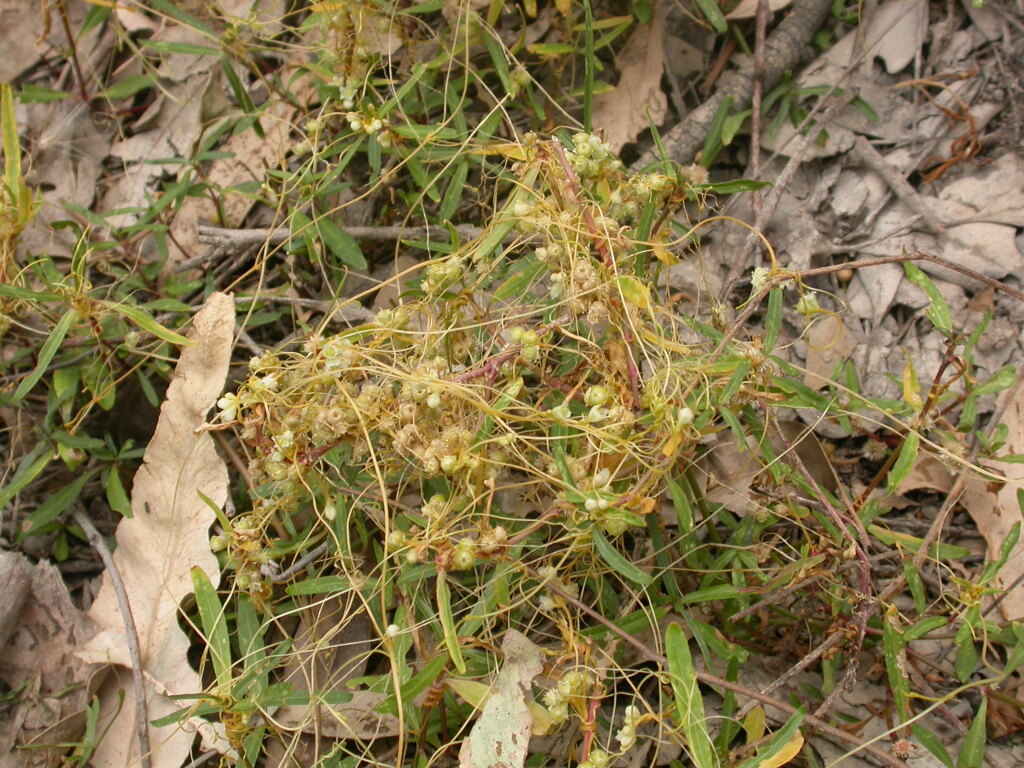Cuscuta
Parasitic, twining annual or perennial herbs; stems filiform, yellow, brown or reddish; haustoria present. Leaves reduced to small scales, one usually subtending each branch and peduncle. Inflorescences axillary, simple or compound cymose clusters; bracts present. Flowers small, regular, bisexual; sepals usually 4 or 5, rarely 3, free or united at base, persistent; corolla campanulate, urceolate or tubular, distinctly 4- or 5-lobed (rarely 3-lobed), lobes imbricate in bud; stamens inserted at throat between corolla-lobes; anthers 2-celled, dehiscing by longitudinal slits, filaments narrow-triangular, subtended by fimbriate scales; ovary superior, 2-celled, ovules 2 per cell, styles 2, free or united, stigmas capitate or linear. Fruit a dry or barely fleshy capsule, indehiscent or circumscissile; seeds 4 or sometimes less by abortion, granular, usually with little endosperm.
About 170 species, cosmopolitan; 8 species in Australia (3 endemic, 5 naturalised).
Jeanes, J.A. (1999). Cuscutaceae. In: Walsh, N.G.; Entwisle, T.J., Flora of Victoria Vol. 4, Cornaceae to Asteraceae, pp. 375–379. Inkata Press, Melbourne.
 Spinning
Spinning


